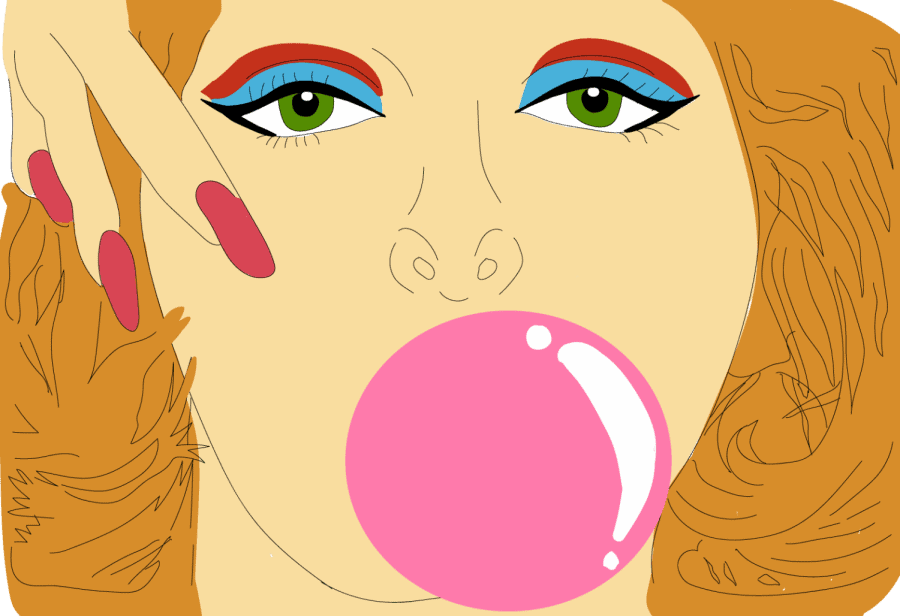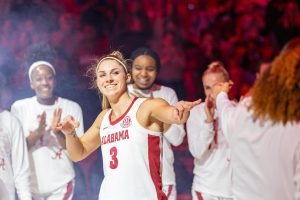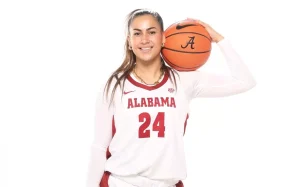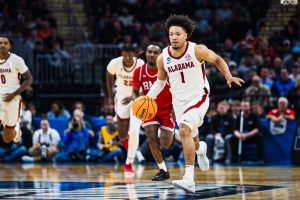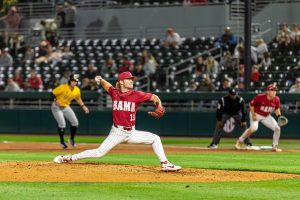Bubblegum pop: ‘Commercialized, computerized and easy to sing to’
August 22, 2021
Commercialized, computerized and easy to sing along to, bubblegum pop is a nostalgic, trendy collection of hits that have been the voice of mainstream teenagers everywhere for nearly six decades.
With oversimplified music, contrived lyrics and playful music videos, bubblegum pop represents all the best parts of being a teenager — endless summers, young love, infectious dancing, slumber parties and, of course, chewing bubblegum.
While bubblegum pop had a massive influence on several decades of pop culture, it didn’t remain independent as a genre. Its distinct strategy of aggressively marketing certain music toward teenagers eventually became synonymous with general pop music and the music industry itself.
As the decades progressed, bubblegum pop and generic pop’s definitions changed, forming dozens of subgenres, subcultures and aesthetics among young people.
Bubblegum pop began as a distinctly American musical phenomenon, first appearing on the radio in the early 1960s as a subgenre of pop catering toward middle and high schoolers.
Not only was it one of the first genres to deliberately market itself to tweens and teens, but the genre also birthed the iconic girl group and boy band movements, which would eventually dominate pop culture in the 1990s and 2000s.
1960s and ’70s
Baby boomers who came of age in the mid-’60s likely remember the hip-swinging, head-bopping beat of bands like The Monkees and The Beach Boys.
Tracks that cemented their places in history as a part of the first wave of bubblegum pop include “Saturday Night” by Bay City Rollers, “Sugar Sugar” by the Archies and “Indian Lake” by the Cowsills.
The first wave of bubblegum pop was short-lived since it was sandwiched between the birth of several other iconic music genres like disco, funk and punk.
1980s
However, the youthful, glowing jewel of bubblegum pop was only temporarily lost to the wind, as the death of disco made way for whimsical artists to take center stage.
Echoes of the sunny glory of ’80s bubblegum pop can be heard in classic tracks like “Vacation” by the Go-Go’s, “Girls Just Want to Have Fun” by Cyndi Lauper, “Kids In America” by Kim Wilde and “Like a Virgin” by Madonna.
The second wave of bubblegum pop came during a unique time when most chart-topping hits were being churned out by women, who dominated the genre and added a touch of eccentricity to the decade.
Not even rock icons like Elton John or Freddie Mercury could resist dabbling in the playful genre. Many rock bands began to experiment with drum machines and synthesizers during this time to match the commercial success of their pop competitors.
Bubblegum pop thrived in the ’80s, an impressive feat considering that the glam rock world was exploding with commercial success at the same time.
1990s
Bubblegum pop began to take its modern form as a subgenre of pop by the early ’90s, when it introduced the world to boy bands like NSYNC and girl groups like the Spice Girls, who prided themselves on a youthful, athletic aesthetic.
In a new social climate where an artist’s looks and image preceded the importance of their talent, bubblegum pop lost its innocent, child-like charm.
Until the creation of MTV, sexuality in music was limited to the lyrics; artists of the ’90s and 2000s had an abundance of videography techniques at their disposal to play upon the literal and figurative implications of their songs.
The original innocence of bubblegum pop was gradually replaced by youthful hypersexuality that was hammered into modern pop culture with hits like “…Baby One More Time” by Britney Spears and “Genie In a Bottle” by Christina Aguilera.
Other musical genres of the ’90s, like grunge, were dying out, leaving room for big names like Gwen Stefani and Paula Abdul to steamroll the music charts with catchy hooks, steamy music videos and memorable songs about love.
“Understanding Media and Culture” explains that the manufactured, contrived nature of churning out pop stars was the easiest way to appeal to teenagers and make a quick buck.
“By the end of the 1990s, mainstream tastes leaned toward pop music,” the book said. “A plethora of boy bands, girl bands, and pop starlets emerged, sometimes evolving from gospel choir groups, but more often than not created by talent scouts. The groups were aggressively marketed to teen audiences.”
While bubblegum pop would eventually cease to exist as its own modern, distinct genre, the idea of creating pop stars to target profitable audiences is still used by music producers and talent TV shows like “The X Factor” and “American Idol.”
2000s, Y2K
Bubblegum pop of the ’90s fused with something new and unfamiliar in the early 2000s thanks to Y2K, an era that was once again dominated by attractive women and men making bold, contrived choices with their music and fashion.
In The Guardian, peak Y2K culture is described as a new age of boundless possibility. According to the article, this distinct, short-lived moment in time “was characterized by a distinct aesthetic period, encapsulating fashion, hardware design, music and furnishings shiny with tech optimism.”
It didn’t take long for music producers to turn to assembly-line, factory-like production of music and music stars.
The technology boom of Y2K led to a faster, more connected world, and music had to keep up; music videos and performances on MTV became critical to an artist’s image and success.
While artists like Britney Spears continued to soar, television spawned several of today’s cultural icons like Demi Lovato, Miley Cyrus, the Jonas Brothers and Selena Gomez thanks to the continued desire of music industry executives to tap into the younger generation.
The Y2K trend circulated in many European countries before returning to the U.S. to top the charts. Bands from across the sea like Aqua made waves with “Barbie Girl,” while the A*Teens rocked the world with covers of Euro-pop beats and instrumentals.
The Legacy of Bubblegum
Computerized dubstep and an endless array of studio bells and whistles led to a diverse array of pop hits in the 2010s, mixing and matching elements of bubblegum pop, pop rock, alternative pop and even influences of music from around the globe.
As a result, bubblegum pop has become more of a feeling or stylistic choice within pop music rather than a distinct music genre.
The legacy and spectacle of bubblegum pop has long since traveled overseas, birthing genres like J-pop and K-pop. While many current Western pop groups have broken up to kickstart their own solo careers, the music group format continues to dominate charts and sell out stadiums in Asia.
Music is an endless journey of evolution and experimentation. While it is unclear where the legacy of bubblegum pop will go by the end of the 2020s, its impact on the marketing and musical strategies of the pop industry is indisputable.



